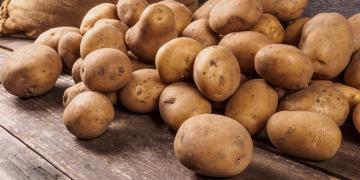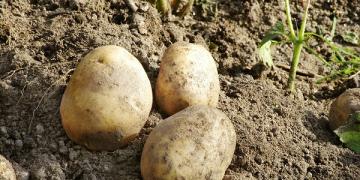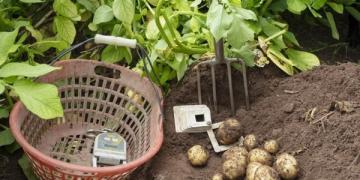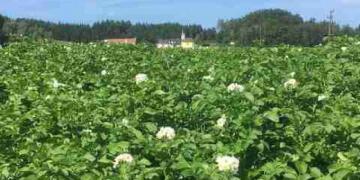EEUU: Potato growers can’t keep upwith ‘red hot’ global demand
Washington potato farmers can’t keep pace with worldwide cravings for french fries, hash browns, tots, potato chips and other processed potato products. And not being able to supply the spuds has meant other countries have gobbled up the market share
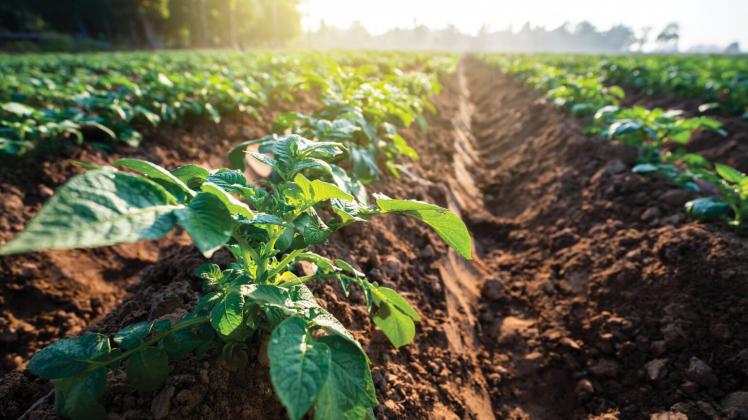
“We’re seeing a lot more European french fries and hash browns and Tater Tots in Asia than we ever have. And again, it’s because we’re just not able to keep up with demand,” said Chris Voigt, executive director of the Washington Potato Commission.
Washington’s potato yields are down about 9% over a two-year period in an industry valued at $7.4 billion. The state has about 165,000 acres planted in potatoes.
About 90% of the spuds grown in Washington are processing potatoes and “that’s kind of unusual compared to most potato states in the country,” Voigt said. “And the reason why we have such a high presence of processing here is because we just have consistent high yields and consistent high quality. And so all the potato processors are really drawn to our area.”
But weather has been affecting these consistent yields.
The state’s last “normal weather” year was 2020, resulting in an average yield of 32.25 tons of potatoes per acre, Voigt said.
The following year, the yield dipped to 29.75 tons per acre, and in 2022, 29.25 tons per acre.
Total U.S. potato production was down 4% in 2022 compared to the previous year.
Though weather can be unpredictable, one thing is certain: the worldwide demand for potato products remains strong, and the potato industry is working on strategies to improve yields.
Voigt traveled earlier this year to Vietnam on a trade mission to promote Washington potatoes. Touring a food distribution center, he noted that all the frozen french fries originated from the European Union.
“We just didn’t have the product to sell to them. The demand is red hot, globally, for potatoes,” he said.
The issue will be exacerbated as California “dries up,” which will put more pressure on Columbia Basin growers because more crops will move up from California to compete with the existing crop, Voigt said.
How can Washington farmers improve their potato yield? It’s a nuanced question, requiring a complicated answer.
But Voigt has key points to make on this topic: The state needs more irrigated land, access to additional overseas markets, to develop new processing potato varieties and to improve soil health.
He said completing the federal Columbia Basin Project to expand irrigated land is necessary. The project serves about 671,000 acres in Eastern Washington, or about 65% of the 1 million acres originally authorized by Congress in portions of Grant, Lincoln, Adams and Franklin counties, with some northern facilities located in Douglas County, according to the U.S. Bureau of Reclamation.
“It would be a real economic boom again for the Columbia Basin and really creates food stability and security for our country,” Voigt said.
Japan and Mexico
The state’s congressional delegation sent a letter in early May 2023 to U.S. Department of Agriculture Secretary Tom Vilsack urging him to press Japan to open its market to imports of fresh potatoes from the United States.
What would this mean for our growers in our state? Voigt said it’s an effort the state is focused on this year.
“If we open up that market, that’ll be a huge plus to Washington state potato growers because now they’ll have the option to maybe switch some of the processing acres over to fresh acres and sell into Japan,” he said.
He said Japan could be a $150 million market once it matures, similar to what the industry expected to happen in Mexico, though 2022 didn’t realize those numbers.
Mexico opened up its interior to the fresh U.S. potato market in 2022, and Washington saw overall sales increase, but not as much as expected. The U.S. has been able to ship into Mexico for about 20 years, but only to the border regions, or about the first 16 miles into the interior, Voigt said.
“So last year was really our opportunity to go deep into Mexico, the entire country. And so overall, it was just shy of about a 10% increase,” Voigt said.
The number likely would have been higher if the state had more fresh potatoes to send to Mexico, he said. He said the state fell well short of realizing that $150 million Mexico market goal.
“If everybody had a better crop or higher yields last year then we would’ve seen a lot more potatoes going into Mexico. And so the reason why we didn’t, again this crop was short and that really kind of drove up the price, too. Fresh potatoes in the grocery store are probably twice as expensive as they were last year,” he said.
New varieties
Extended high temperatures in 2022 also took a toll on potatoes, negatively affecting overall yield.
The Russett Burbank potato, an heirloom variety developed in the 1870s, is the most popular among potato processors, but it didn’t do well in last year’s heat – but some of newer potato varieties did, Voigt said.
“We had some fields that lost close to 50% of their yield and the new varieties were more like 3% to 10% loss in yields,” Voigt said.
The potato industry pays attention to state climate model forecasts, which show extended periods of heat. “We need to know what the potato growing environment is going to look like in 10, 20, 30 years from now,” Voigt said.
It can take up to 15 years to develop and bring new potato varieties to market, Voigt said. “We need to find varieties that are more resilient to extended periods of heat,” he said.
So though 2022’s varieties performed well during the extended heat period, Voigt said there is room for improvement.
Fuente: https://www.tricitiesbusinessnews.com/2023/06/potatoes-focus-jun23/




